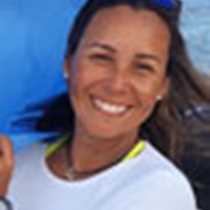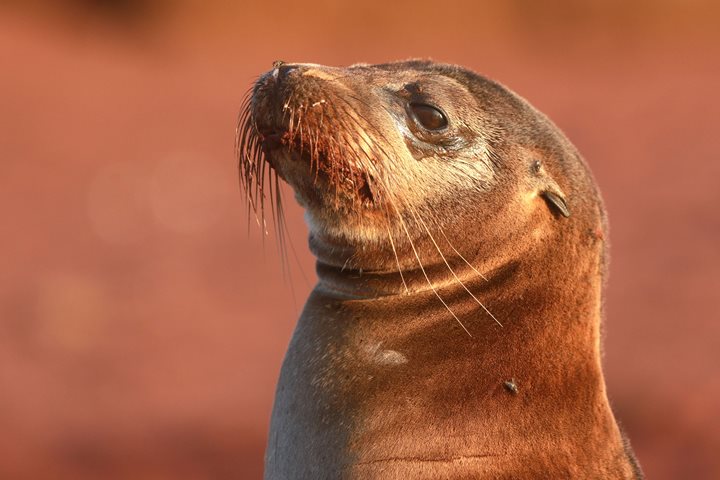Bartolome Island is located in the heart of the Galápagos Archipelago. It is considered one of the jewels in the crown, due to its youth and the fact that it’s relatively lacking erosion, it’s an open field guide of various volcanic structures. The ochre colors of the surrounding coast and volcanoes are striking, particularly in the morning sun. The surrounding waters are rich in nutrients, therefore a snorkeling session was almost mandatory. A couple of Galápagos penguins warmed themselves in the sun not far from their rocky homes. In the afternoon, we repositioned northwards and anchored by Sombrero Chino or “Chinese Hat,” an island that has a peculiar shape given by the viscous, sticky lavas that it once erupted.
- Daily Expedition Reports
- 14 Sep 2017
Bartolome and Sombrero Chino Islands, 9/14/2017, National Geographic Endeavour II
- Aboard the National Geographic Endeavour II
- Galápagos
Gaby Bohorquez, Naturalist
Gaby was born and raised in Guayaquil, Ecuador. Her first job in the Galapagos was on board a 90-passenger cruise ship as the cruise director’s assistant, and she fell under the spell of the Enchanted Isles. She returned to Guayaquil to study at the ...
Read MoreShare Report
Related Reports
11/23/2022
Read
National Geographic Islander II
Isabela and Fernandina
Our day began with the chance to point out a lot of interesting geological features as we enjoyed Zodiac tours along a massive flank of Ecuador Volcano on Punta Vicente Roca. In the afternoon, we took a sunny walk on Punta Espinoza on Fernandina Island. We spotted many iguanas, and a bunch of sea lions hanging around, too.
11/22/2022
Read
National Geographic Islander II
North Seymour & Rabida Islands
Relatively small and low compared to neighboring Santa Cruz, North Seymour is located to the north of Baltra. The island is dry with predominantly low shrubs, like prickly pear cacti. The incense trees are bare during the dry season. Seabirds like frigatebirds and blue-footed boobies nest on the island, and sea lions rest on the sand when they are not fishing. Land and marine iguanas also live here. Rabida is in the middle of the archipelago and has a striking red sand beach. We observed a small colony of sea lions of all ages resting or nursing. Behind the beach, American flamingos nest in a brackish lagoon. This island is full of contrasts and wildlife that we enjoyed observing during this day of expedition.







